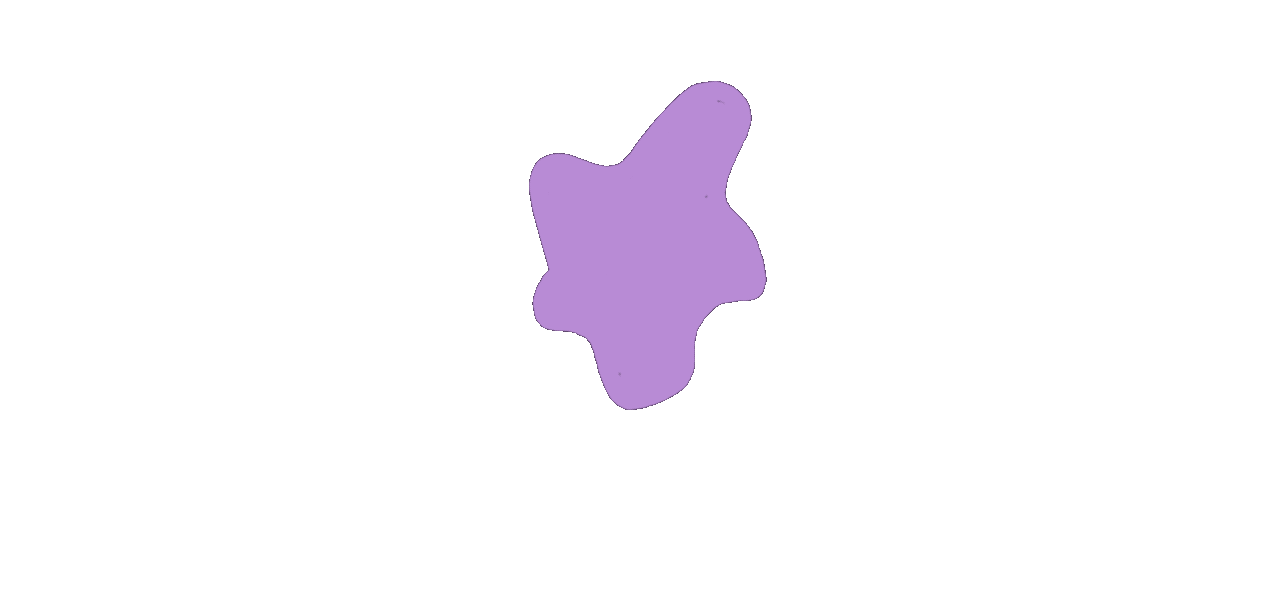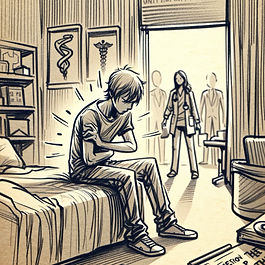
AR in Healthcare

Introduction
Hypothetical Augmented Reality hologram design for the healthcare industry.
Team
Team of 3
Timeline
3 months : March 2024 - May 2024
Skills
Literature review, surveys, interviews, user personas, contextual inquiry, business requirements, technical requirements, storyboarding, wireframing, prototyping, user testing.
Tools
LateX, Zoom, Figma, Figjam, Miro board, Midjourney.
Motivation
In countries that do not deploy blockchain in their healthcare databases, there is an issue with easily accessing medical history. Uneducated patients lack knowledge about the whereabouts of their medical reports or a good understanding of their health problems. Recalling medication from a long time ago increases the cognitive load on the patient. Medical bills are also not easily reviewed by patients, which might lead to unnecessary charges to the patient's account. To solve this problem, we have devised a product that acts as a connection between an AR hologram and an application, making the experience of going to the hospital seamless and reliable.
Problem
In many countries, healthcare is still trying to get to a point where patients can access their medical history and their bills securely, and understand their symptoms regardless of their literacy. Although there are many apps out there for hospitals, there is no region-specific database that allows them to access this information transparently and securely. In the next decade or so, we are foreseeing AR and blockchain technology playing a major role in accessible healthcare for those who need it.
Problem Statement
Existing healthcare experiences lack universal accessibility and user-friendly interpretation, impeding efficient comprehension and communication of medical information.
Objective
Enhance healthcare accessibility and understanding through the integration of Augmented Reality (AR), revolutionizing doctor consultations, medical diagnoses, data management, and billing processes for all stakeholders involved.
Design process
Discover
1. Literature Review
2. Requirement Gathering
Define
1. Competitive Analysis
2. User Personas
3. Storyboard
Ideate
1. User Interviews
2. Paper Prototype
3. Low-Fidelity Design
Design
1. High-Fidelity Design
Testing
1. User Testing
2. Feedback Evaluation
Delivery
1. Research Paper
Discover
This project focussed on future interactions with technology that might exist in the near future, so for the discovery phase we conducted a literature review and strategized technical, ethical and design requirements.
Literature Review
After conducting the literature review, we narrowed down the limitations of the current AR hologram technology that could be worked on in our project.
Requirement Gathering
Building a technology that can be interacted with takes a lot of planning and consideration of various factors that could affect the project.
We put together a structure for the requirements we may face for this process.
Define
The Define phase of this project dealt with finding out what products are out there currently that work with AR holograms and how they are visualized. We also created our personas and a storyboard to bring together the whole idea of our solution.
Competitive Analysis
There are few hologram-based products out there since this domain is new and upcoming. We found 3 that were relevant to the medical field from which we took inspiration from.
Ophthalmology Hologram

An interactive simulation of eye anatomy in three-dimensional (3D) by using holography environment approach in order to create visualization of the structures of the eyes.
True3D Viewer
.webp)
Provides a hologram of organs that can be moved around, zoomed in on, or manipulated in actual 3D space.


Microsoft HoloLens

Bringing a critical change within the healthcare industry, from the teaching and training of therapeutic students to executing troublesome surgery in real-time reenactments.

User Personas
Storyboard
For the storyboard, we used mid-journey to generate images with holograms to visualize a story with the product we wanted to design.

A patient experiences an uneasy symptom

Patient arrives at hospital and explains problem to nurse

Nurse creates interactive hologram highlighting issue area

Nurse transfers hologram visualisation to the Doctor

Doctor views patient history data linked to hologram

Blockchain-encrypted EHR portal stores entire patient history

Documentation reveals interacting medication side effects
Ideate
For the Ideate phase of this project, our goal was to visualize holograms in a way understandable without the presence of a hologram technology through elements and features that our users need.
User Interviews
To fully understand user behaviour and user needs, we conducted 11 user interviews with all 3 of our personas through zoom and found some key takeaways that we could incorporate to our solution.
Demographics
3 Doctors : 2-10 years experience
2 Nurses : 3-5 years experience
6 Patients : 18 - 25 years of age.
Selecting Participants
We selected participants from India where hospital systems are not as technologically advanced. This allowed us to understand and gain perspective about what our users needed for a better experience for all 3 personas.
Interview Questionnaire
We created two user scripts and they had some questions that were similar and some questions related to their persona. Here are some of the questions we asked our participants.
User script 1: Doctors and Nurses.
1. What are some of the major challenges you have faced during a consultation?
2. Do you think by the end of your appointment, your points were clearly explained to the patients?
3. How do you manage the medical records of recurring patients?
4. How do you handle miscommunication between you and a patient?
User script 2: Patients.
1. What are some of the major challenges you have faced during a consultation?
2. Do you have any issues with understanding the diagnosis given to you?
3. How do you maintain your medical records?
4. Do you always go to the same doctor for a recurring symptom?
Key Takeaways
-
Many patients don’t understand concepts more than fever, cough,cold.
-
If patient is from a different place that speaks a different language, communication is difficult, which results in them not understanding the conversations and possibly not trusting the doctor enough.
-
Biggest problem is when patients don’t bring previous medical documents in case of persisting symptoms.
-
When the doctors goes deep into explaining how and why something is happening, either due to misunderstanding or educational constraints, the patient doesn’t understand it.
-
Just to make the patient understand how the anatomy of their body works is always a task, it doesn’t feel like the patient understands the gravity of an illness with clarity when they leave.
Here are some things our participants mentioned during the interviews.
”Many patients don’t understand concepts more than fever, cough, cold etc.”
”If I go to a hospital in a different state that speaks a different language, communication is difficult and making a trusting connection with the doctor becomes hard.”
Paper Prototype
We started brainstorming our design and experience through a 3D paper prototype to easily portray how an AR hologram would look like in a real-life setting. We used a paper cup as support for a human anatomy hologram on paper and straws to visualize elements and components that are interactive.
”Biggest problem is when it’s a new patient to a hospital and they do not bring previous medical documents if they are coming for persisting symptoms and illness.”
”When I need to get deep into explaining certain issues with technical terms, some patients do not understand me due to misunderstanding or educational constraints.”

Lo-fidelity Design
We wireframed a lo-fidelity design on paper to translate the 3D paper prototype into a 2D digital version for easy understanding.












Design
We used figma to create a 2D prototype of our project with all the interactions and elements to simulate an AR hologram.
High Fidelity Design
Startup
This video shows the flow for startup and visualisation of the human anatomy.
Info Cards
This video shows the flow for the information cards for selected organs/muscles and input options.
Conflict
This video shows the flow for the correlation between multiple information cards.
Testing
After creating the high fidelity prototype, we wanted to conduct a round of user testing to evaluate the features and usability of our product.
User Testing
We conducted user testing with the same participants of the user interviews so we could compare their requirements with the final product.
Key Takeaways
-
Having a more visual way of adding symptoms is interesting.
-
Some people might need to be trained on how to use it so errors can be fixed or avoided,
-
If we can pull off the logic of conflicting medication, we can add more logics that can help doctors more.
-
Having different input methods is a good feature
-
A high fidelity mockup will make it much more effective to understand if it can be implemented in reality.
-
Since it was a figma prototype, the interaction between a finger and the AR was not properly conveyed.
-
The highlighting of the organs and muscles were appreciated.
-
The information was very well thought out and presented in an easy way to understand.
-
Zoom-in functionality was not there.
-
Buttons and action icons could have been bigger.
Delivery
After the usability testing, we took all the key takeaways and wrote a research paper on AR in Healthcare since this kind of technology is not yet in practice so this is a theoretical study. The future scope of the project would be to implement the design into an actual AR production an multiple rounds of testing to ensure that it complies with all technology, ethical and UX standards.
My other projects
.png)



